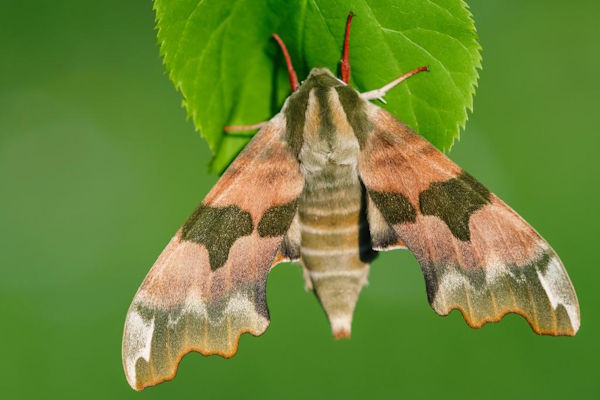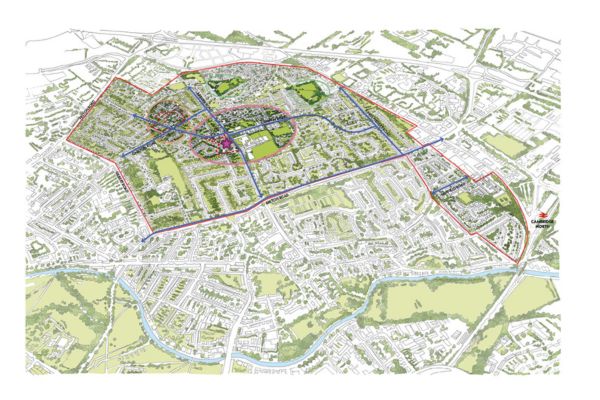This marker on the Cambridge Butterfly Trail is at Donkey Common – see the map above.
The Lime hawk-moth is a striking night-flying moth seen from May to July across lowland England and Wales, often in gardens, parks, and woodlands. It features scalloped pinky buff forewings with distinctive green patches and a wingspan of 46 to 78mm. Unusually for moths, adults do not feed.
Caterpillars are vivid green with pale stripes and a blue “horn” on their tail, feeding at night on lime, birch, elm, alder, and London plane leaves. As they prepare to pupate, they turn purplish-grey and often wander down tree trunks or onto pavements, making them more noticeable, where they overwinter as pupae in leaf litter around their host trees.
This species has recently expanded northwards, benefiting from warmer springs. Common yet captivating, the Lime hawk-moth enriches our nocturnal wildlife and signals a warming climate.
For more information, please visit Butterfly Conservation’s page on this species – Lime hawk-moth.





